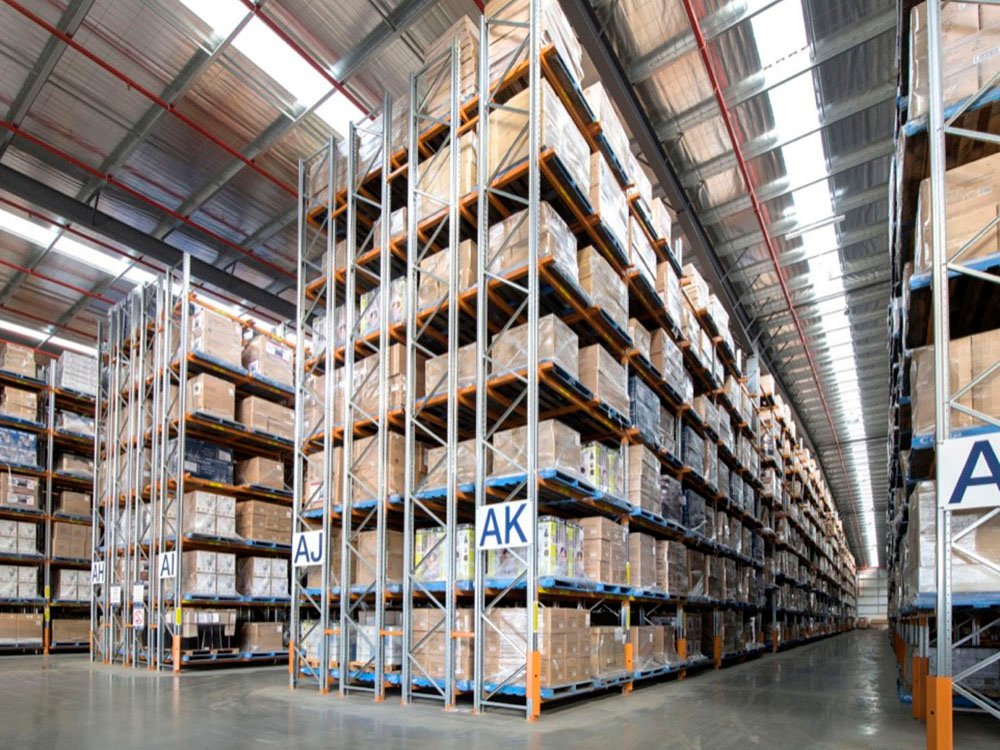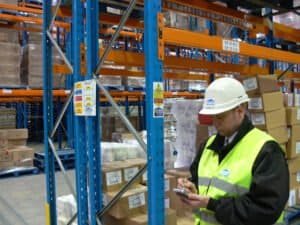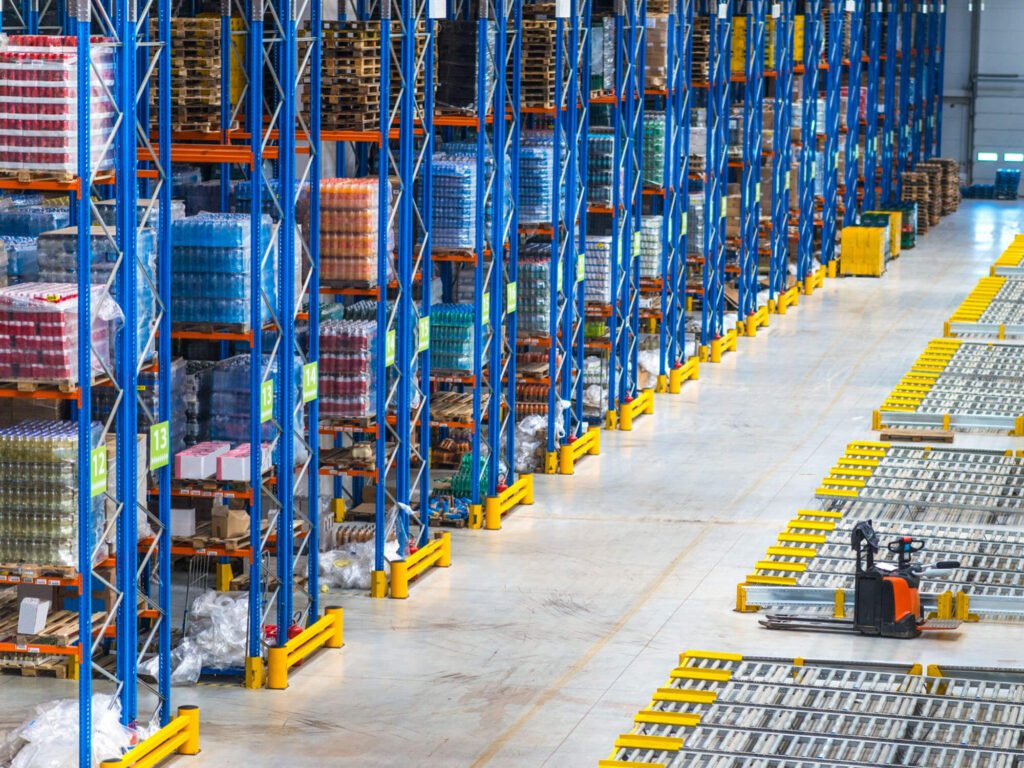Double deep pallet racking vs. standard selective racking remains one of the most popular matchups when it comes to choosing the correct pallet racking system for warehouses. Whether you’re opening a new inventory facility or wanting to improve your current storage space, it’s vital to make the right decision regarding racking solutions.
However, not many people thoroughly understand the differences between double deep warehouse racking and selective pallet racking. If you feel like you’re one of them, this article is for you!
After going through this in-depth guide, you’ll learn all the ins and outs of each storage system, as well as their differences in many aspects. The ultimate goal is to help you decide which one is right for you. Is it selective racks, recognized for their flexibility and accessibility, or double deep racking systems, which provide more storage density? Let’s find out right away!
Double Deep Pallet Racking 101
How can storage be increased without expanding floor space? You may be looking for double deep pallet racking. This new storage solution uses a fresh way to maximize warehouse capacity while keeping operating efficiency.
What Is Double Deep Pallet Racking?
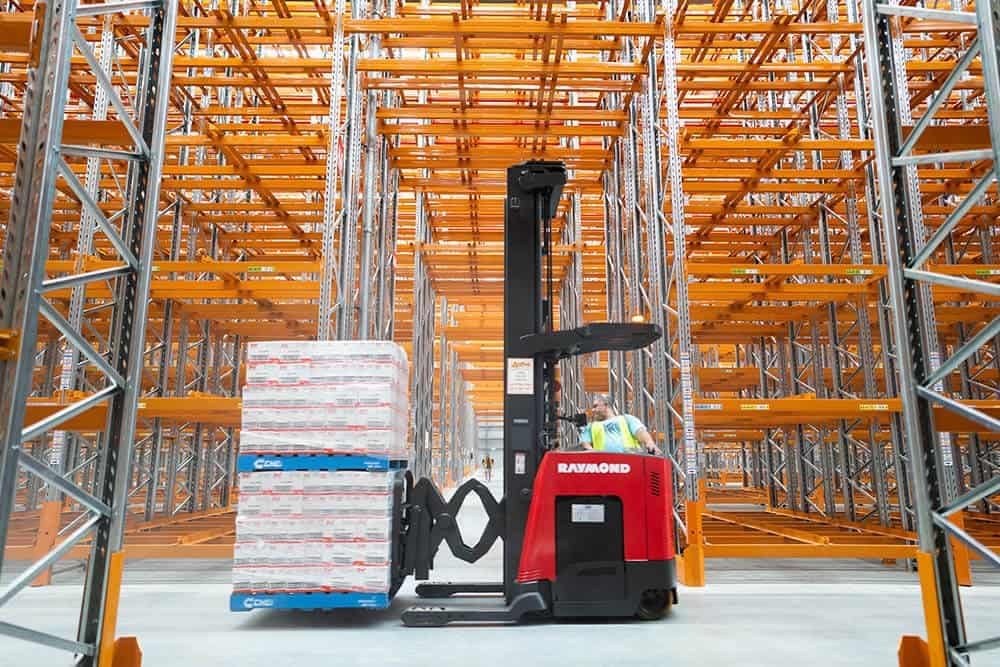
Instead of simply one row of racks, double deep pallet racking features two rows back-to-back that share the same aisle. This innovative approach allows you to store twice as many pallets in the same area as typical racking.
These racks are often composed of solid steel and have upright frames to hold everything up, beams to form the shelves, and additional bracing to keep everything stable.
And, just as you can personalize your wardrobe with various shelves and drawers, these racks may be outfitted with wire mesh or solid panels to accommodate whatever you’re keeping.
How Double Deep Pallet Racking Works
Double deep pallet racking follows the Last-In, First-Out (LIFO) concept. This implies that the pallet put last into the rack will be the first to be retrieved.
But getting to that second pallet nestled down in the back isn’t as straightforward as reaching into your refrigerator for a snack. This necessitates the use of one-of-a-kind instruments, such as a reach truck with telescopic prongs, which are intended to reach deep into the racking system and grab that elusive pallet without upsetting the front one.
Compatible Material Handling Equipment For Double Deep Racking
One important factor to consider before investing in double deep pallet racking is the specific equipment necessary for optimal functioning. Standard forklifts with ordinary tines are not able to reach back pallets in a double-deep layout; therefore, you will need to modify or replace your present equipment.
Fortunately, there are three main material handling equipment solutions that perform well with double deep racking:
- Telescopic forks: These extending forks are a low-cost option that enable your current forklifts to reach the back pallets. They provide a great view for the operator since just the forks and pallets move in and out. Furthermore, telescopic forks with the necessary grade can handle two pallets at once, increasing productivity.
- Pantograph conversion kits: These kits add a pantograph component to the mast of a standard forklift, converting it into a double-deep handling machine. The scissor-like mechanism increases the forks’ reach, allowing access to the back pallets. But the scissor operation may reduce operator visibility.
- Pantograph mast lifts: Also known as scissor mast lifts, these forklifts are specifically designed for double deep racking systems. Their unusual shape allows for thinner passages, increasing storage density. They also provide smoother operation and quicker loading and unloading times, lowering the danger of pallet or product damage.
Advantages Of Double Deep Pallet Racking
Double deep pallet racking provides various benefits for facilities looking to improve storage space and efficiency:
- Increasing storage density: By removing every other aisle and putting pallets two deep, double deep racking dramatically improves storage capacity within the same area. This is especially useful for warehouses that have limited floor space.
- Reducing aisle space requirements: Eliminating alternative lanes in double deep racking minimizes the total aisle space required in the warehouse, freeing up precious floor space for other processes or storage.
- Cost-effective in certain cases: Although double deep racking calls for certain material handling tools, in some cases it might be a cost-effective solution. Greater storage density and less aisle space might help warehouses with large volumes of similar goods and little SKU variability to save long-term costs significantly.
Disadvantages Of Double Deep Pallet Racking
It is true that double deep pallet racking has certain limitations, despite its numerous benefits:
- Lowering selectivity compared to standard racking: Due to the LIFO mechanism and the need to reach the back pallet first, double deep racking has lower selectivity than regular selective pallet racking. This might be a drawback for warehouses that need quick access to specific pallets or hold a large range of items.
- Requiring specialized material handling equipment: Double deep racking demands the use of reach trucks with telescopic forks, which are more costly and require more training to operate than conventional forklifts.
- Not appropriate for all warehouse layouts or product types: Double deep racking works well in warehouses with enough ceiling height and unobstructed lanes for reach truck operation. It may not be appropriate for warehouses with uneven layouts or that hold a large range of items of varied sizes.
Exploring Standard Selective Racking
Did you know that selective pallet racking is the most commonly utilized pallet racking system in warehouses throughout the world? Its appeal originates from its simplicity, adaptability, and convenience of use, which make it a go-to option for a variety of storage requirements.
What Is Standard Selective Pallet Racking?
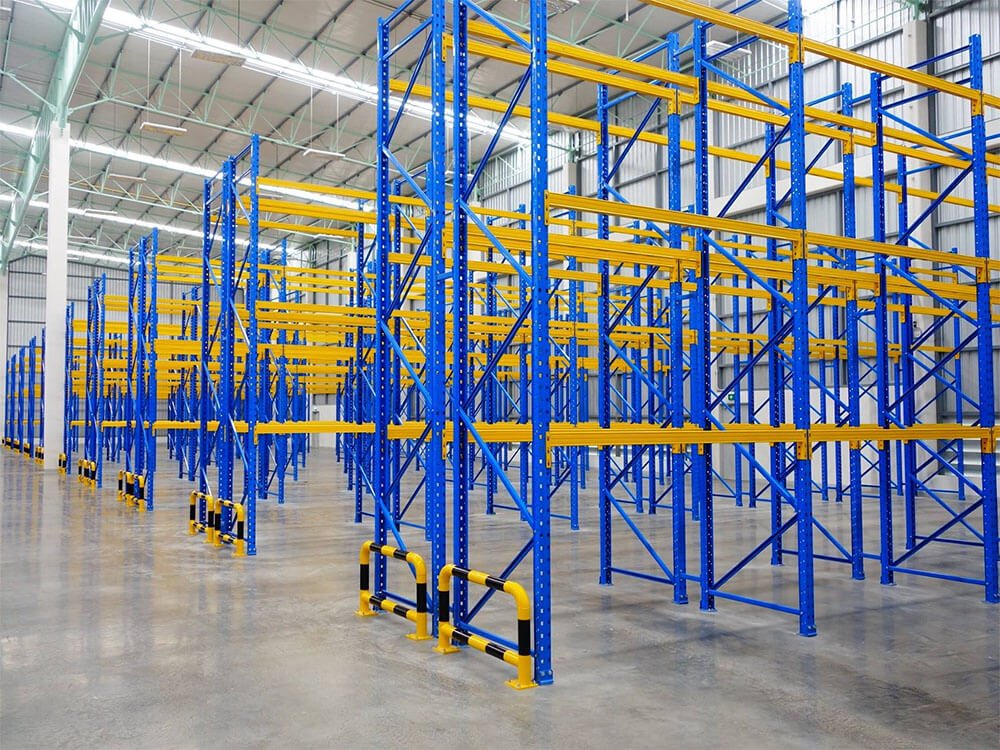
Consider conventional selective pallet racking as your warehouse’s own pallet parking garage. Each pallet has its own allocated parking area, allowing you to conveniently retrieve the one you need without having to relocate the others.
These racks are built of robust steel and feature vertical frames that operate as the “walls” of the garage, while horizontal beams provide the various “floors” where your pallets may park. And, much like a real garage, these racks have bracing features to keep everything stable and secure.
How Standard Selective Pallet Racking Works
Selective pallet racking adheres to the First-In, First-Out (FIFO) principle, which asserts that the first pallet put in the rack is the first to be retrieved. This is done by providing direct access to each pallet spot, allowing forklifts to choose and deposit pallets while not interrupting other stored objects.
The FIFO method is great for warehouses that keep perishable commodities or products with expiration dates because it assures that older inventory is used or delivered first. It also streamlines inventory management and lowers the likelihood of product obsolescence.
Advantages Of Standard Selective Pallet Racking
Selective pallet racking has various benefits, making it a flexible and popular solution for warehouses:
- Offering high selectivity and accessibility: Each pallet may be accessible directly without the need to move other pallets, allowing for more efficient picking and refilling.
- Accommodating numerous product types and sizes: Selective racking is versatile in terms of product kinds and sizes since it can support a broad range of pallet sizes and load combinations, making it excellent for storing a variety of items.
- Integrating effortlessly with various material handling equipment: Standard forklifts can easily move through the aisles of selective racking systems, allowing for efficient loading and unloading operations.
Disadvantages Of Standard Selective Pallet Racking
While typical selective pallet racking has several advantages, it also has significant limitations:
- Having lower storage density: The single-deep design of selective racking necessitates wider aisles for forklift access, resulting in less storage density than double deep racking systems.
- Needing larger aisles: Forklift operation requires wider aisles, which may take up precious warehouse floor space.
- Not cost-effective for bulk inventory: Selective racking may not be the most cost-effective approach for warehouses holding huge amounts of identical items with little SKU variation owing to its reduced storage density.
Double Deep Pallet Racking Vs. Standard Selective Racking: In-Depth Matchup
Now that you’ve learned about double deep and standard selective pallet racking systems, let’s compare them. Understanding their various attributes and trade-offs is crucial for determining which system is most suited to your warehouse’s individual requirements.
#1: Storage Density
The double deep pallet racking system wins the space optimization fight hands down. By removing every other lane and putting pallets two deep, this technique greatly enhances storage density as compared to normal selective racking. This benefit is especially noticeable in warehouses with a limited footprint.
But the greater density of double deep racking comes at the expense of worse selectivity. Moving the front pallet ro access the back pallet in each space takes time and might impede operations.
Standard selective racking, on the other hand, provides direct access to each pallet, making it a better fit for warehouses with high SKU diversity and frequent picking needs.
#2: Selectivity And Accessibility
Regarding the second criteria, selective pallet racking takes the lead. Its single-deep design allows forklift operators to easily reach any pallet without having to relocate others. This results in more efficient and streamlined procedures.
Additionally, due to its LIFO nature, double deep pallet racking provides less selectivity. This causes inefficiencies in warehouses where certain pallets must be accessed often or if FIFO inventory control is critical.
#3: Cost-Effectiveness
The cost-effectiveness of double deep and standard selective pallet racking is determined by many variables, including warehouse size, inventory turnover, and the cost of material handling equipment.
Double deep racking is often more cost-effective in bigger warehouses with high storage density needs and minimal SKU variability. Reduced aisle space and greater storage capacity can lead to considerable long-term cost reductions, particularly when storing large numbers of comparable items.
Nevertheless, the initial expenditure for double deep racking is higher owing to the need for specialized reach trucks. These vehicles are more expensive than ordinary forklifts and require additional operator training.
Standard selective racking can be a more cost-effective solution for smaller warehouses or those with a large number of SKUs and frequent picking demands, despite its lower storage density.
#4: Material Handling Equipment
The kind of material handling equipment needed is a significant difference between double deep and selective pallet racking.
Double deep racking needs the use of reach trucks with telescopic forks that can extend to reach the back pallet of each bay. These vehicles require wider lanes to maneuver and may not be appropriate for all warehouse layouts.
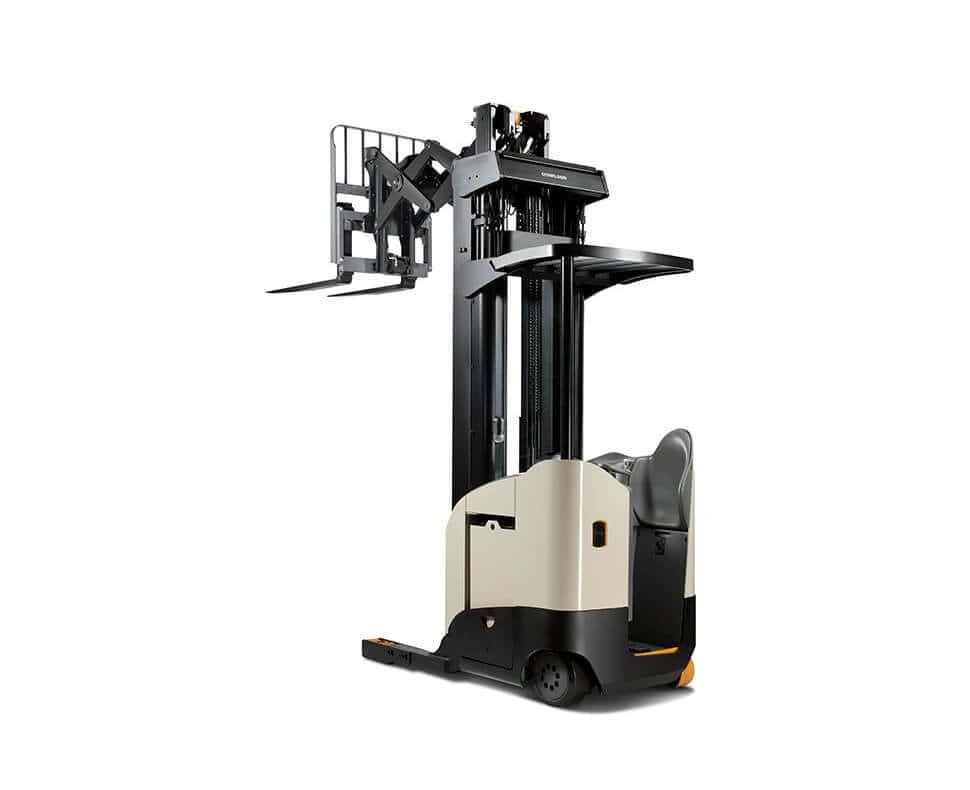
Selective pallet racking, on the other hand, is accessible with normal forklifts, making it a more adaptable solution. But if your warehouse currently uses reach trucks, double deep racking can be a reasonable solution for increasing storage density.
#5: Safety Considerations
Both double deep and selective pallet racking systems involve significant safety risks, so it’s critical to establish appropriate safety precautions and best practices for each.
Because of its increased height and the necessity for reach trucks, double deep racking may cause pallet dislodgement, rack collapse, and accidents with nearby equipment. It’s critical to have the racking system correctly erected, inspected regularly, and trained personnel in safe truck operation.
Standard selective pallet racking also necessitates attention to safety measures, such as correct load placement, frequent checks for damage, and safe forklift operation. Adequate aisle width and visible signs are critical for avoiding accidents and maintaining a safe workplace.
#6: Ideal Applications For Each System
A double deep pallet racking system is appropriate for facilities that have the following features:
- Large storage volumes.
- Low SKU diversity.
- Sufficient ceiling height.
- Ample aisle room for reach truck operations.
- Focus on high-density storage.
Standard selective pallet racking is ideal for warehouses with:
- High SKU diversity.
- Frequent picking and replacement requirements.
- Different product kinds and sizes.
- Need direct access to individual pallets.
- Limited vertical clearance.
Double Deep Pallet Racking Vs. Standard Selective Racking: Summary Table
Feeling overwhelmed by the specifics of each racking system? Don’t worry! The following table summarizes the main distinctions between double deep and selective pallet racking. Use it as a snapshot to compare and contrast their features, allowing you to pick the ideal match for your warehouse more quickly.
| Criteria | Double Deep Pallet Racking | Standard Selective Racking |
|---|---|---|
| Storage Density | Higher | Lower |
| Selectivity | Lower (LIFO) | Higher (FIFO) |
| Accessibility | Requires specialized reach trucks | Accessible with standard forklifts |
| Cost-Effectiveness | Ideal for bulk storage, low SKU diversity | Well-suited for diverse inventory, frequent picking |
| Aisle Space | Reduced | Wider |
| Ideal Applications | High-volume storage, limited floor space | High SKU diversity, frequent picking needs |
Which Storage Solution Should You Opt For?
So, with this knowledge, which pallet racking system is ideal for your warehouse? There is no one-size-fits-all solution; it is dependent on your individual requirements and goals.
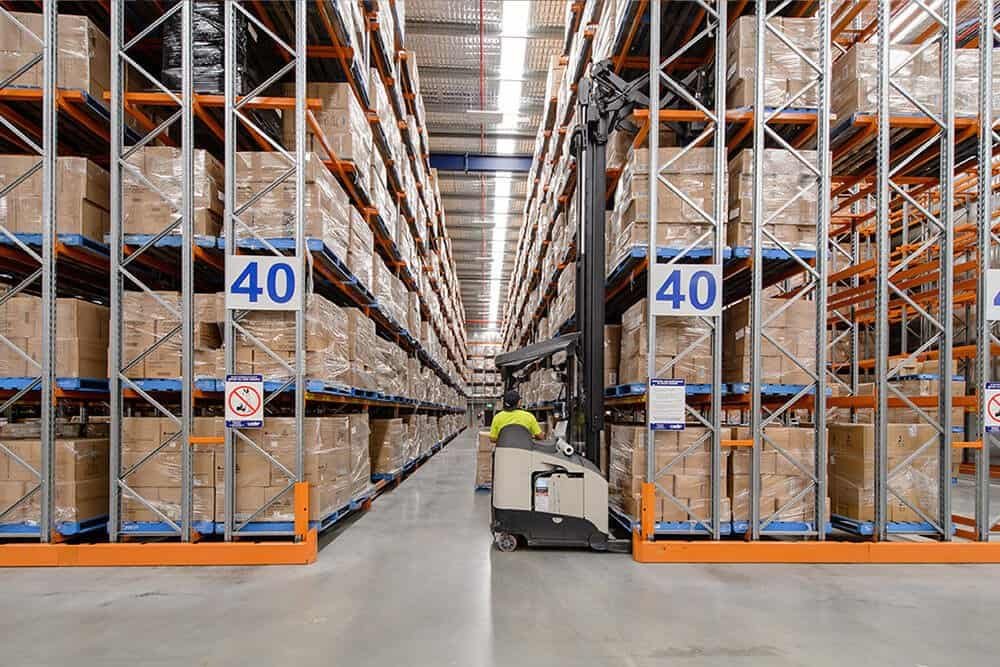
Prioritizing High-Density Storage
If you want to optimize storage density in a big warehouse with limited floor space and predominantly store huge numbers of identical items, double deep pallet racking might be the ideal solution.
Its ability to increase storage capacity in the same aisle area is a major strength, particularly if you have a lot of goods.
Prioritizing Accessibility
But if your warehouse has a wide variety of items with different SKUs and you value rapid and simple access to specific pallets, standard selective racking should be a better choice.
While it may not have the same storage density as double deep pallet racking, it provides more choice and flexibility in inventory management.
Prioritizing Other Key Considerations
Finally, the selection boils down to your personal needs and budget. Consider the following factors when making your decision:
- The nature of your business: Ask yourself whether your current inventory flow facilitates the FIFO or LIFO method. Answering this question will determine the optimal racking system for you.
- The products you sell: Consider the kind of goods you stored, their weight, size, and any special inventory needs, such as temperature or humidity control.
- Your warehouse’s layout and available space: Examine your warehouse floor and storage space to identify the ideal racking configuration.
- Your budget: Double deep racking may require the purchase of specialized forklifts, yet it is the most cost-effective per square meter option. If you aren’t ready to invest in new equipment, consider putting extensions or counterbalance features on your current forklifts.
Feel free to connect with a racking professional who can analyze your requirements and propose the best solution for your warehouse. Remember that the correct racking system will improve your warehouse’s efficiency, production, and bottom line. Thus, choose carefully.
Should You Switch From Selective Racks To Double Deep Pallet Racking?
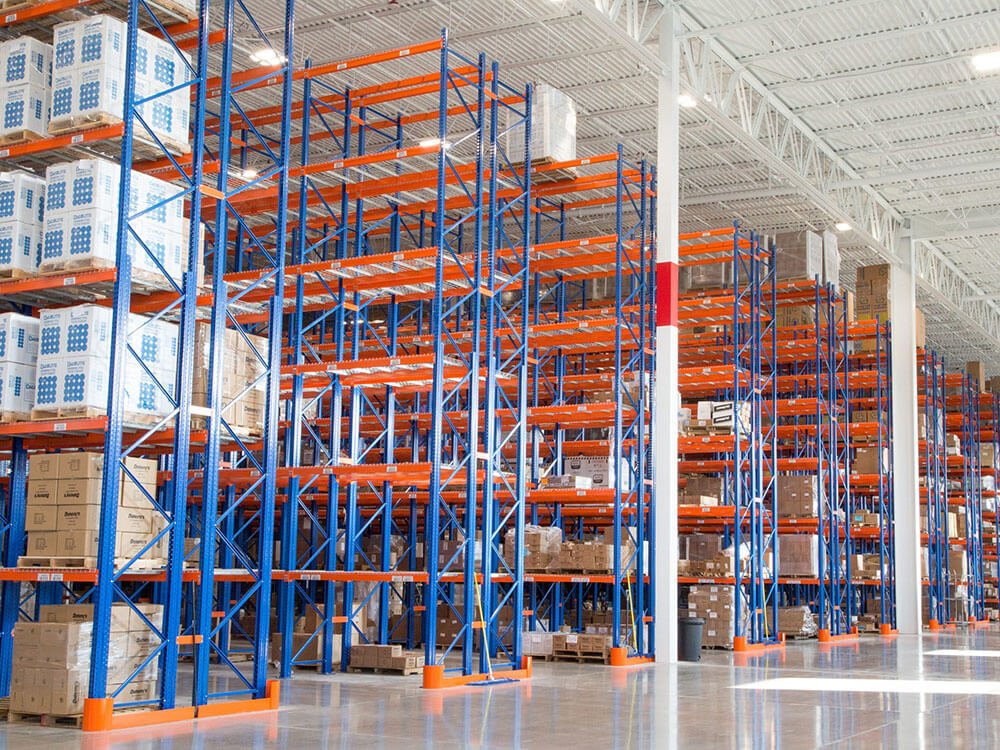
For warehouses looking to maximize storage density, switching from selective racks to double deep pallet racking is a realistic solution. If your current selective racks are in excellent shape, you can reuse most of the components throughout the conversion process, making it a potentially cost-effective update.
But it’s essential to examine a few aspects below before making the transfer:
- Considering buying material handling equipment: Remember that ordinary forklifts are not compatible with double deep racks. To access the back pallets, you’ll need specialized equipment, such as reach trucks with telescopic forks.
- Expecting temporary disruptions: The conversion procedure may cause temporary disruptions in your warehouse operations, as you will need to unload items, deconstruct current racks, and reinstall them in a double deep layout. To reduce downtime, it’s best to perform the conversion in stages.
- Consulting with a storage system integrator: A wise move is to speak with a storage system integrator to determine if the conversion is feasible and cost-effective. They can help you decide if the improvement in storage density is worth the investment in new equipment and the temporary operation downtime.
Conclusion
So, the matchup of double deep pallet racking vs. standard selective racking is deciding between a sports car and a minivan; both have advantages depending on what you require.
Double deep racking is similar to squeezing two cars into one parking spot, which is ideal for warehouses bulging at the margins with much of the same commodity. It does, however, lose some accessibility; reaching those rear pallets calls for certain forklifts.
Conversely, selective racking is like having individual places in a parking lot. Although every pallet is simple to access anytime you need it, it may not squeeze as much in. Despite the reduced inventory density, it can handle a wide range of product kinds and sizes.
The best choice finally depends on the specific needs of your warehouse and financial capability. Consider the scale of your warehouse, the kind of products you now have on hand, and how frequently you should be accessing them. See a racking specialist; they will help you to choose the best solution to run your warehouse like a well-oiled machine.

